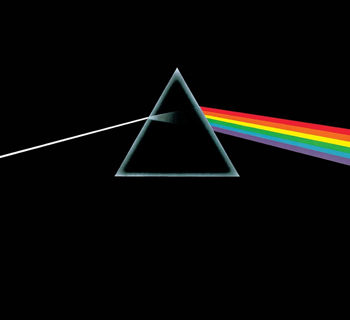 David Gilmour -Rattle That Lock
David Gilmour -Rattle That Lock
You always know when you’re listening to a David Gilmour guitar solo; it’s vaguely minimalist, drawn out, high sine – a melancholy, mid-heavy style – with a tone so sharp that you could trick college students into selling it to their friends and family. There is something peaceful and expansive about that sound – shifting major and minor modalities – and goddamn if that guy doesn’t start his newest album with one of those beautiful solos.
I have been a Pink Floyd fan for approximately as long as I have been an upper-middle class white boy stereotype – so a while, at least since my mid-teens – but I’ve never been too enamored of Gilmour in isolation. In fact, I dropped off the Floyd spaceship around the time everybody else did (haven’t even tried The Division Bell) which is when Roger Waters got too far up his own ass and quit, but that is a tale for another time.
With that above statement made, I came to this album with some apprehension. I don’t hate Gilmour by any stretch, and he’s a fantastic guitarist, but I had never given any of his non-Floyd or Floyd-without-Roger-Waters work a shot, and I’ve heard mixed things, to say the least, on his post-Waters Floyd.
So, it makes me pretty happy to say that I enjoyed this album. Lots of caveats, but I enjoyed it.
First, Gilmour is himself on the guitar – if he weren’t so damn influential he’d be sui generis, but alas his style is so popular that it’s been stolen by every guitarist who wants to sound good but doesn’t want to put a lot of effort into it. It bears repeating that Gilmour has a style that you immediately know: pure high sine sustain, where it’s so distorted that it becomes clear, stripped of feedback; a vague minimalism, with at least one-note count but with plenty of shifting scales; phrasing that vacillates freely between high-pitched, drawn-out wails and a simple but thought-out scalar run; but most importantly, an inimitable, sorrowful sensibility. This album is filthy with sorrow, at least instrumentally.
And there are definitely some Floyd flourishes. “In Any Tongue” sounds like a cut from The Wall, and there are plenty of ambient stretches that would do Rick Wright proud. Atmosphere is the name of the game, and then in some stretches, pretty tight rhythm sections, which makes sense when you think about it. Gilmour wouldn’t be able to get away with those solos if his rhythm section weren’t tighter than a film student’s tripod thumbscrew.
In isolation, the tracks are generally enjoyable. Dynamic and melodic, erring toward minor key styles when appropriate, there is a sense of contemplation that persists through this album and goes hand in hand with Gilmour’s overall playing.
But then we get to the album as a whole, and it feels Lovecraftian, non-Euclidian, off. The overall structure of the album itself feels a bit shaggy and hastily planned. There is definitely such a thing as album feng shui, and while the tracks are solid (except maybe “The Girl in the Yellow Dress”), they don’t flow into or against each other with any sense of cohesion. It feels like a grab bag of really strong tracks that Gilmour wrote and compiled on an album, rather than a unified project.
There is certainly nothing wrong with that. But as an album experience it lacks, not a little ironically, the flow that Gilmour has mastered in his guitar playing. Towards the end of the album, it starts to feel overlong, and it doesn’t help that the album is an hour long and a number of tracks are instrumental. As fond as I am of Gilmour’s instrumentals, a two-minute solo definitely can be a bit much; there is strength in brevity.
As a solo-record-by-a-famous-guitarist-that-I’ve-reviewed-in-the-last-week, I certainly prefer it over Crosseyed Heart.
Until that lock breaks from all that rattlin’
8,495 out of 10,000 Rawckus Kung Fu Throwing Stars











